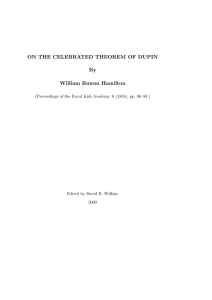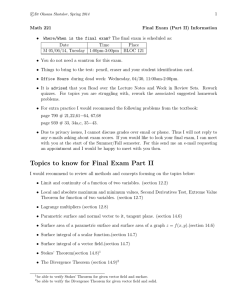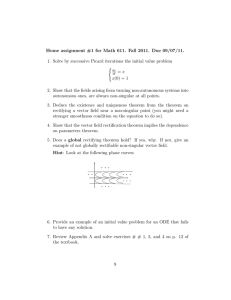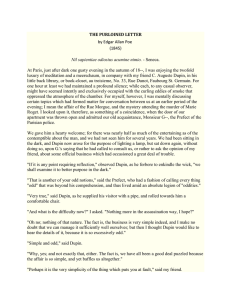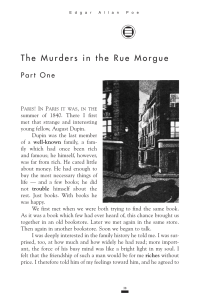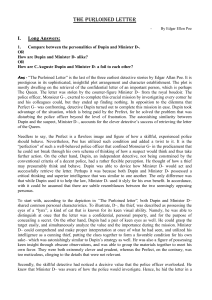ON THE CELEBRATED THEOREM OF DUPIN By William Rowan Hamilton
advertisement
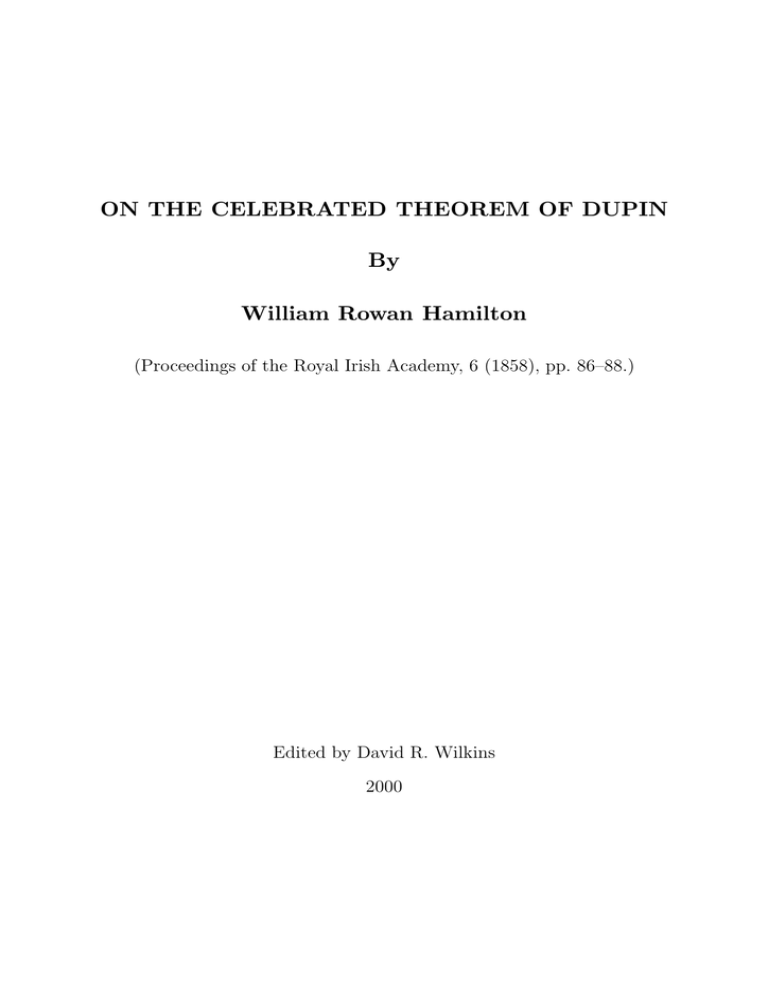
ON THE CELEBRATED THEOREM OF DUPIN By William Rowan Hamilton (Proceedings of the Royal Irish Academy, 6 (1858), pp. 86–88.) Edited by David R. Wilkins 2000 On the celebrated Theorem of Dupin. Sir William Rowan Hamilton. Communicated May 8th, 1854. [Proceedings of the Royal Irish Academy, vol. vi (1858), pp. 86–88.] Sir W. R. Hamilton, having been lately induced to consider, in connexion with the Calculus of Quaternions, the celebrated theorem of Dupin, respecting the character of the intersection lines of three systems of orthogonal surfaces, as lines of curvature thereon, stated that he had thus been led to perceive some symbolical results which he supposed to be new, and which seemed to him to be of sufficient interest to be submitted to the Academy. As long ago as 1846, he had proposed the notation, C=i d d d +j +k ; dx dy dz and had pointed out a theorem, differing only slightly in its expression from the following: V . α Vβγ = γ S . αβ − β S . αγ; which may also be thus written, V . α (V . βγ) = S . αβ . γ − β S . αγ, or thus, V . α (V . βγ) = S . βα . γ − β S . αγ. The recent results just referred to have a remarkable symbolical resemblance to those comparatively old ones, since they admit of being written thus: I. V . α(V . C ν) = S . α C .ν − C S . αν; II. V . C(V . βν) = S . β C .ν − β S . C ν; where C is not an ordinary vector, but a certain symbol of operation, analogous to a vector, in its combinations with other symbols, and defined by a foregoing formula: while α and β are constant vectors, and ν is a variable vector, regarded as a function of x y z, or of ρ = ix + jy + kz, and subject as such to the operations C, S . α C, S . β C; where d d d S.αC = − a +b +c . dx dy dz 1 if α = ia + jb + kc, and the symbol S . β C is similarly interpreted. These were among the chief elements of calculation employed, in proving by quaternions the theorem above mentioned of Dupin; of which one expression, in the quaternion calculus, is the following:— “If the three differential equations, S . ν dρ = 0, S . ν 0 dρ = 0, S . νν 0 dρ = 0, be integrable, and if S . νν 0 = 0, then the supposition V . ν 0 dρ = 0 conducts to the equation S . νν 0 dν = 0.” Another expression of the same theorem is as follows: “If S . ν C ν = 0, S . ν 0 C ν 0 = 0, S . ν 00 C ν 00 = 0, and V . νν 0 ν 00 = 0, then S . ν 00 (Sν 0 C .ν) = 0.” In this last formula, the symbol S . ν 0 C .ν denotes a vector having the direction of −dν, if dρ have the direction of ν 0 ; and the equation expresses, that if we thus move a little along the first surface in the direction of the normal to the second surface, the new or near normal to that first surface will be contained in the tangent plane to the third surface, and therefore will intersect the old normal to the first surface: which is a form of the theorem of Dupin. Although not very closely connected with that well-known theorem, Sir W. R. H. wishes to add that another old form of his, for any three vectors, namely, V(V . γβ . α) = γ S . βα − β S . γα, has suggested to him this new symbolical result, III. V(V . γ C .ν) = γ S . C ν − C S . γν; and that each of the three general theorems, expressed by the formulæ I. II. III. of this Abstract, can be proved to continue to be true, when his old signification of the symbol C, to which Mr. Carmichael’s researches have lately given an additional interest, is changed to this other and more extensive signification, IV. C = i δ1 + j δ2 + k δ3 ; where δ1 δ2 δ3 are three new distributive symbols, operating on functions of x y z, and commutative (in order) not only with any ordinary and scalar constants, but also with i j k. 2
